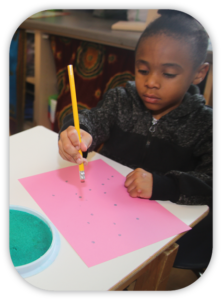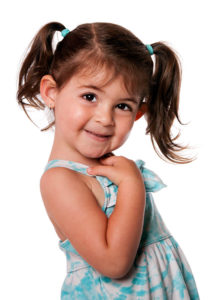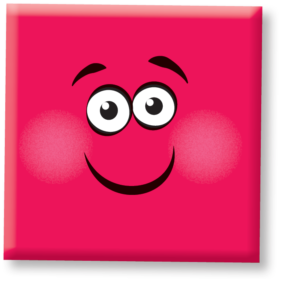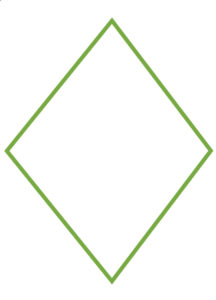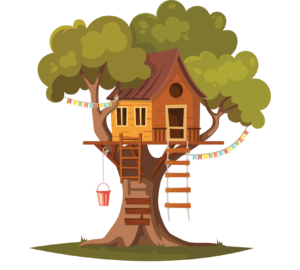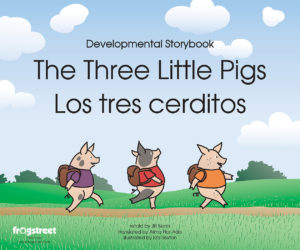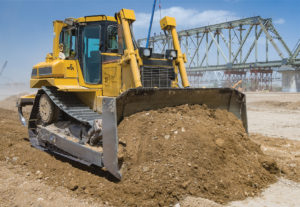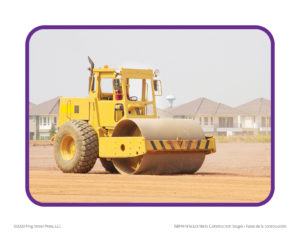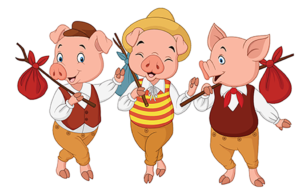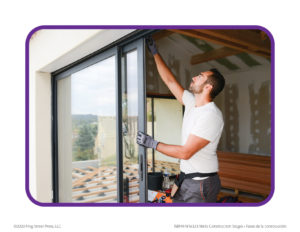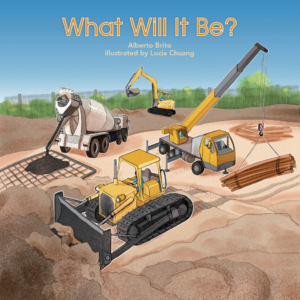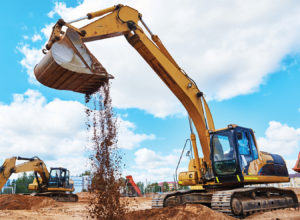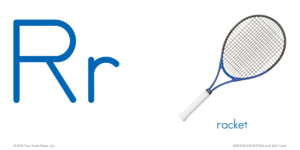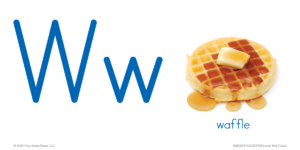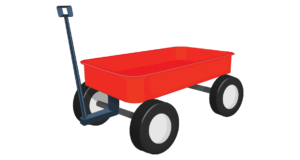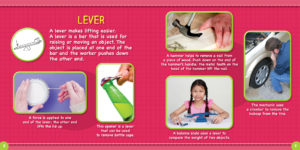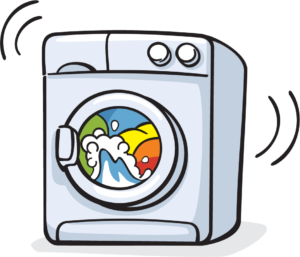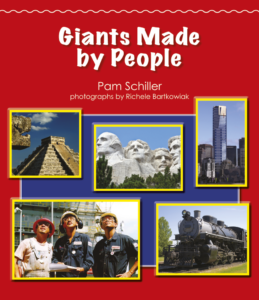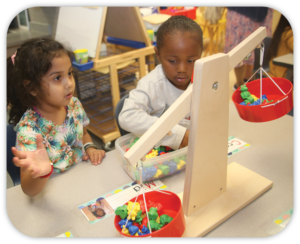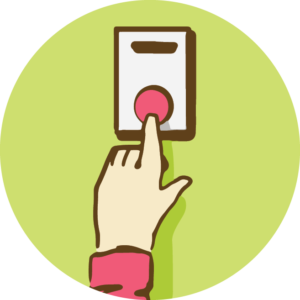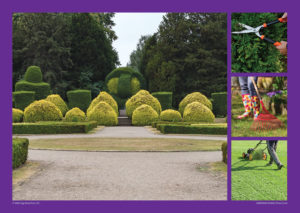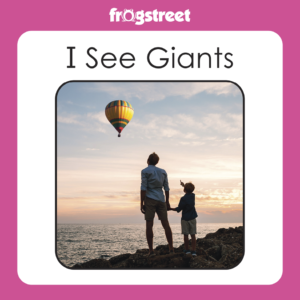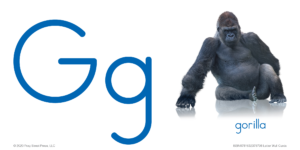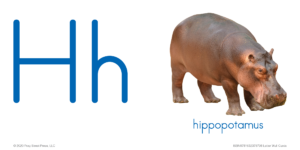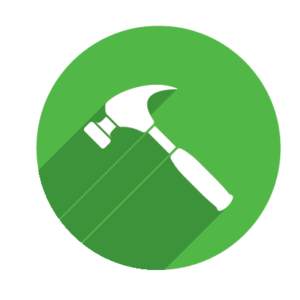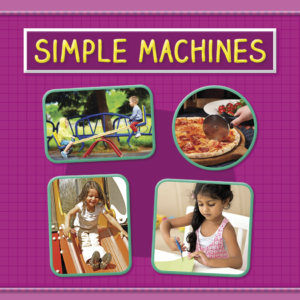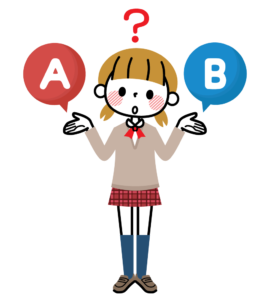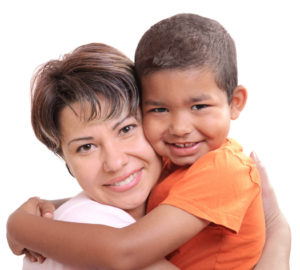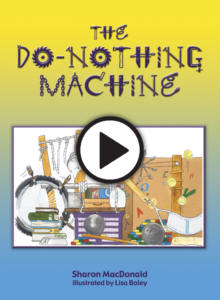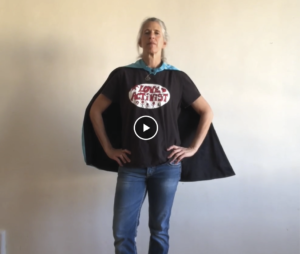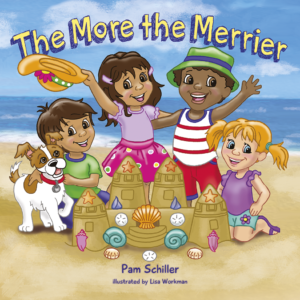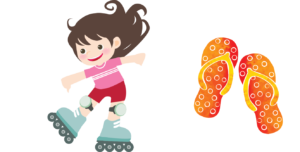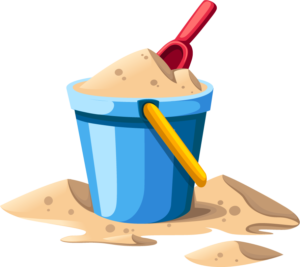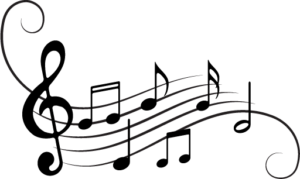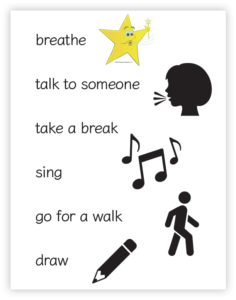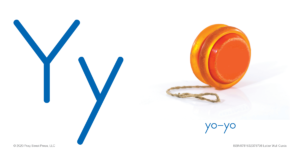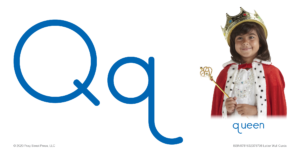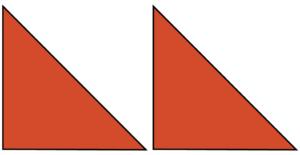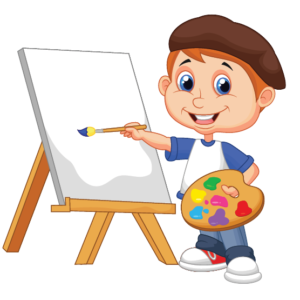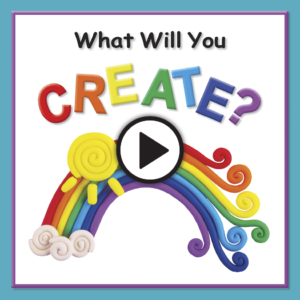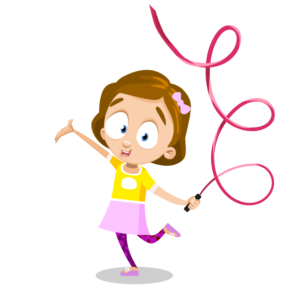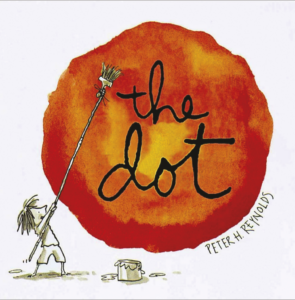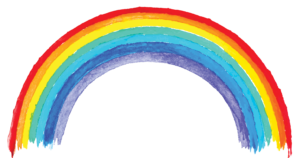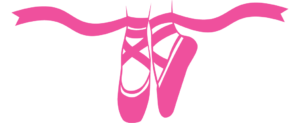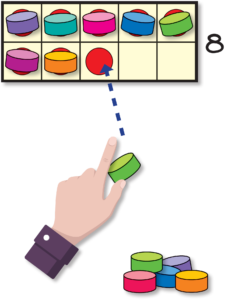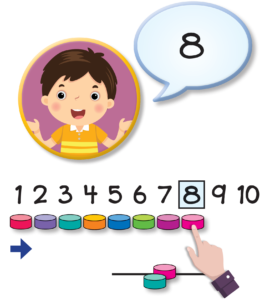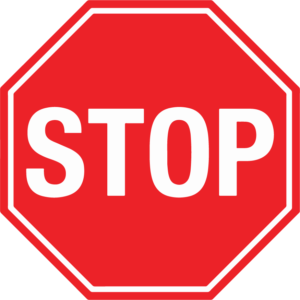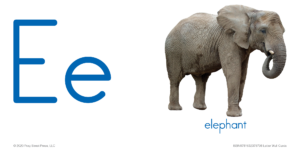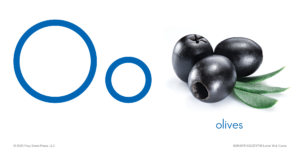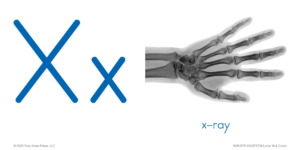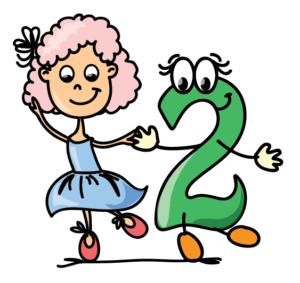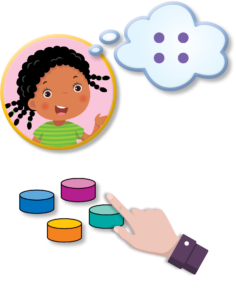Creative Me
Week 1: Under Construction
This week, your child will focus on construction. Together you will learn the names of construction vehicles and how they are used. You will explore the different stages (steps) of building.
Word of the Week: construction
Before You Begin
Watch these videos to better understand the concepts your child will be learning this week. These are not videos you will watch with your child. These are just for you!
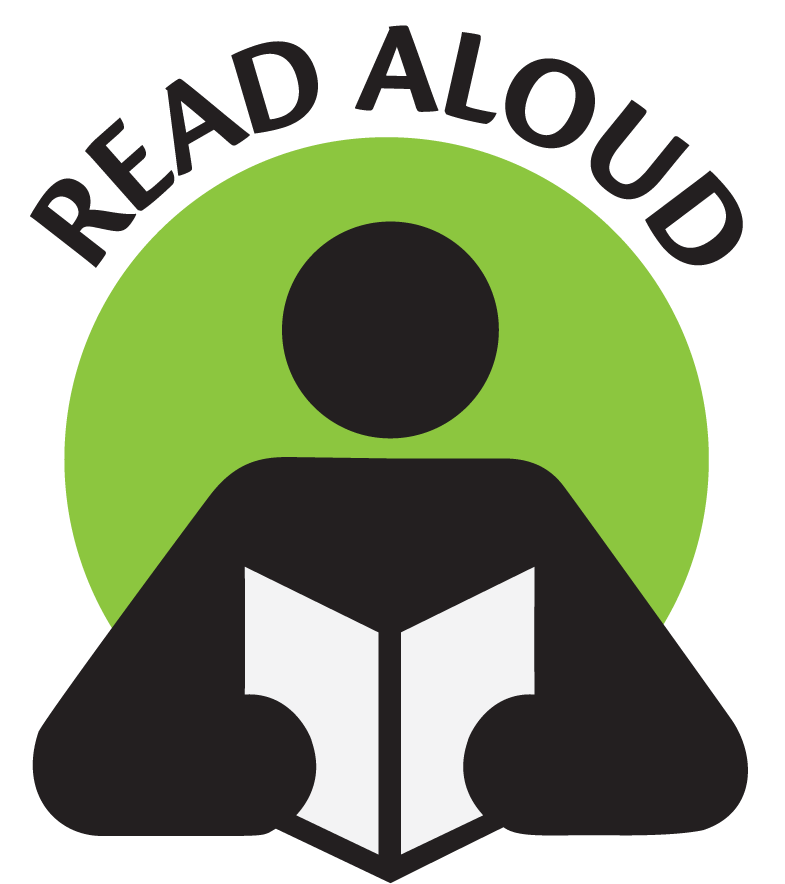
Books to Read
- The Three Little Pigs eBook
- Under Construction Video eBook
- What Will It Be? eBook
Supplies to Gather
- blocks, boxes, plastic containers
- building tools (pails, sand shovels, molds)
- cardboard
- digging tools (rocks, sticks, hand shovels, spoons, cups)
- envelope
- graph paper
- items for stacking (pillows, cans, toilet paper rolls, empty boxes)
- journal
- paper
- ruler
- sand or dirt
- smoothers (craft sticks, rolling pins)
- straws, toothpicks, pencils
- water
- writing tools
We All Count
Explain that together you and your child have built (constructed) a safe learning family. Every day you commit to helping keep your learning time safe. You each make a difference every time you do something kind and helpful. Listen to and sing along with the song “We All Count.” Click image for lyrics.
Daily Message
Workers construct concrete walls and floors.
- Say the sentence. Have your child repeat it.
- Alliteration is repeating the beginning sound in several words. Draw out the beginning sounds as you say: construct and concrete. Both words begin with /c/ as in cat.
- Have your child say construct and concrete.
- Say the word pair workers/build. Ask: Do the words begin with the same sound?
Vocabulary
This week you will be learning about construction. Construction is the process of building something. Say: Tell me about something you built. Click image to enlarge the Word of the Week.
Jazzy Shapes
Cut out shapes from cardboard (circle, rectangle, square, triangle, star, crescent, diamond, oval, cylinder). Spread the shapes around the floor. Have your child find the shape that is named in “Jazzy Shapes” and dance on it before the next shape is named. Point out that the style of music in the background is called jazz. Click image for lyrics.
Storytime
Explain that stories can be told in many ways. They can be told using a book, movie, video, or song. Explain that today’s story will be told in a video. Watch the video e-book Under Construction with your child. Ask: Do you think a video is a good way to tell a story? Why?
Body Angles
Have your child lie on the floor and raise her straight legs. Take a photo and show it to your child. Move your finger from her head along her body to her toes. Say: Your body and your legs make an angle. You can change the angle (space between your body and legs) by raising and lowering them. Challenge your child to make different angles.
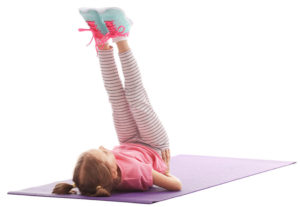
Draw a Plan
Explain that before a building is built, an architect draws a plan. The building can be tall or short. It can have a flat roof or a pointed roof. It can have many windows or a few windows. Have your child draw a plan for a building. (If you have graph paper, have your child use it for the drawing.) Help your child label the drawing.

Dig, Dig, Dig!
Have your child use a variety of natural objects (rocks, sticks) or simple tools (hand shovels, spoons, cups) to dig outside. Ask: Which tools are best for digging? Why? Why not? Are your hands good for digging? Talk about the moves used in digging (force and motion). Ask: When do you push down? Pull up?
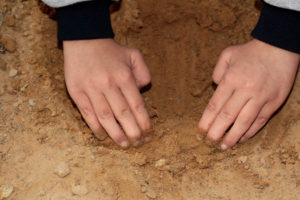
Front-End Loader
Show your child the photo of a front-end loader. Ask your child what “front-end loader breathing” might look like. Create a new breathing technique. You might breathe in as you move your hands forward along the floor and pretend to scoop up dirt, then exhale as you lift up the scoop of dirt and dump it to the side. Click image for photo.
Daily Message
Workers install insulation inside the walls.
- Say the sentence. Have your child repeat it.
- Draw out the beginning sounds as you say: install insulation inside. Say: All three words begin with /i/ as in itch. Have your child say the words.
- Say the word pair inside/concrete. Ask: Do the words begin with the same sound?
- Write the sentence as your child recalls each word.
Alliteration
Have your child choose two out of three words that begin with the same sound. Say three words (rat, race, car) and have your child repeat them. Ask: Which two words begin with the same sound?
mom, mat, dad
wall, window, door
fast, two, four
car, house, cat
muffins, cook, concrete
Mateo, Maria, Jennifer
Storytime
Before reading the familiar tale of The Three Little Pigs, ask your child to pay attention to how the pigs build their new homes. When you finish reading, talk about the construction. Ask: If a home has a strong foundation, will it easily blow down? Do you think the pigs built strong foundations for their homes? How do you know?
Parallel Lines
Have your child place two straws along the opposite sides (right and left) of an envelope. Explain that the straws do not meet. They are parallel to each other. Have your child move one straw to place it along the top. Point out how the two straws cross (intersect). They are perpendicular to each other.

Water on the Roof
Tilt a ruler so it slants like one of the sides on a triangular roof. Pour a small amount of water on the ruler. Ask: Why does the water flow down the ruler? Explain that the slant helps water run off the top of a building. The water runs into rain gutters that take it to a downspout (like the one Itsy-Bitsy Spider climbed).
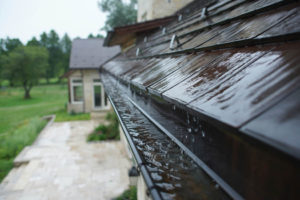
A Little Mouse
Hold your child’s hand with her palm facing up. With your other hand, tickle her open palm. Then slowly walk your fingers (the “mouse”) up her arm and land on your child’s ear, head, or shoulder. This is the mouse’s house! Recite the simple verse as the mouse moves.
There was a little mouse
Who lived in a house
Right . . . up . . . here!
Daily Message
Rebar rods are inside concrete.
- Say the sentence. Have your child repeat it.
- Draw out the beginning sounds as you say: rebar rods. Say: The words begin with /r/.
- Have your child say the words.
- Say the word pair rods/inside. Ask: Do the words begin with the same sound?
- Write the sentence as your child recalls each word.
Writing Together
Review the steps of construction that you saw in the Under Construction video eBook. Click image to compare the steps for building a house with the construction of a big building in the video. Have your child choose a photo and tell about what is happening. Write the sentence and read it together.
Storytime
Watch the video eBook Under Construction again today. After watching, click image of the skyline. Explain that a skyline is the outline of buildings against the background of the sky.
Door Angles
Find a hinged door in your home that opens out into a room or hallway. Have your child open the door carefully. Watch how the hinges and the door move. Have your child move the door so there is a narrow angle (acute) between the door and the wall. Move it to make an uppercase “L” angle (right angle). Move it to make a wide angle (obtuse).

Down the Drain
Have your child watch as you pour some water into the tub drain. Ask: What happens to the water? How was the tub designed to make the water flow to the drain? Place a ball inside the tub to show how the surface of the tub slants gently allowing the ball to roll to the drain. Ask: How is water like the ball?
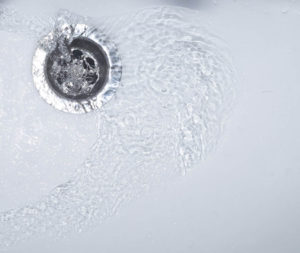
Build with Blocks
Have your child build using blocks, boxes, or plastic containers. Suggest your child build a tall building and a short building side by side to show the difference. Ask: Do you think you used more blocks to build the tall building or the short building? How do you know? Have your child take down the buildings, matching the blocks one-to-one before putting them away.
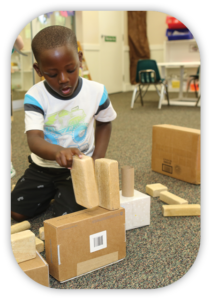
Commitments
Remind your child that we each do our job to help keep our learning time safe when we choose one agreement to focus on. Choose an agreement for the day. Ask: How will keeping your agreement help members of our family?
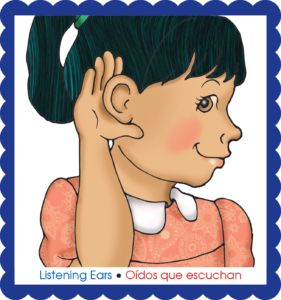
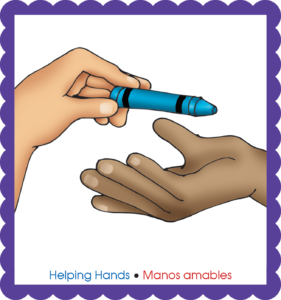
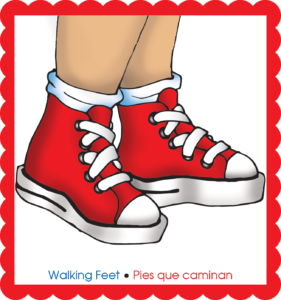

Daily Message
Carpet covers cold wood floors.
- Say the sentence. Have your child repeat it.
- Draw out the beginning sounds: carpet covers cold. All three words begin with /c/ as in cat. Have your child say the words.
- Write the sentence as your child recalls each word.
- Point to the period at the end. Say: A sentence that tells information ends with a period.
Big Toe Truck
The “Big Toe Truck” is a song about three vehicles. The song uses words that have more than one meaning (toe/tow, forklift/fork lift; pickup/pick up). A tow truck pulls broken down cars. Tow means pull. But the word tow sounds the same as toe. Imagine a truck pulling your toe! Enjoy the double meanings of the words. Click image for lyrics.
Storytime
Explain that today’s story is about children at school who watch machines building something on an empty lot by their school. Read What Will It Be? After reading, ask: Were you surprised about what the empty lot became? Which of the construction vehicles would you have drawn? Why?
Square to Rhombus
Draw a square and a rhombus on paper. Ask: How are these shapes the same? (four straight sides, opposite sides parallel) How are these shapes different? (square: four L-shaped [right] angles; rhombus: two wide [obtuse] angles and two narrow [acute] angles) Have your child draw the shapes.
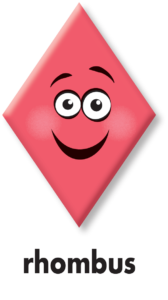
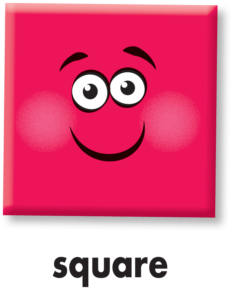
Building Materials
Go on a walk with your child to look for the materials used to build houses and apartment buildings in your neighborhood. Notice which buildings are covered with brick, stone, wood, stucco, and slate. Feel and compare the materials. Ask: Which material do you think is harder? stronger? Why do you think so?
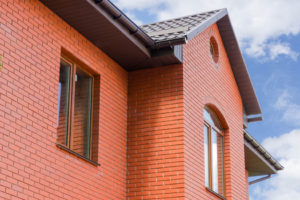
Sandbox Build
In your yard or at a local playground, have your child build using sand or dirt along with sticks, stones, bricks, or logs. If available, add building tools such as pails, shovels, and molds. Remind your child to level her site before beginning to build.
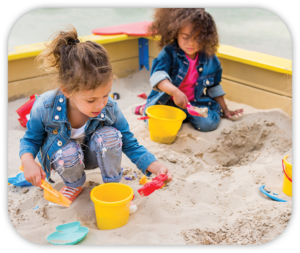
Calming Myself
Have your child tell about a time when she was upset and was able to calm herself. Ask: Which calming strategy did you use? How did it feel to be able to control your feelings? Practice the calming strategy your child suggests.

Daily Message
Construction workers install wiring, walls, and windows.
- Say the sentence. Have your child repeat it.
- Draw out the beginning sounds: wiring, walls, windows. All three words begin with /w/. Have your child say the words.
- Write the sentence as your child recalls each word.
- Remind your child: A sentence that tells information ends with a period.
We All Count
Remind children about the song you sang earlier this week, “We All Count.” Ask: What does it mean to “count”? Count can mean saying numbers in order (1, 2, 3). Count can mean finding out how many you have of something. Count can mean that you matter. Count is a word that has more than one meaning. Sing the song together. Click image for lyrics.
Storytime
As you read What Will It Be? today, have your child notice ways the construction workers prepared the lot before building. Ask: What did the workers do? What construction vehicles did they use? Which vehicle would you like to drive?
Is It “Right”?
The builder is using a special tool. It helps him draw and cut L-shaped angles. He uses it to see if two walls or boards come together correctly. Have your child use the corner of an envelope in the same way. If the corner of the envelope fits inside the space (angle) where two walls come together, the angle formed by the walls is “right.”
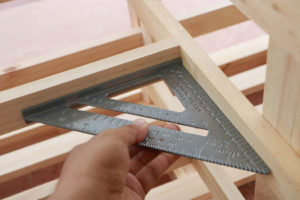
Build a Tower
Find items you feel comfortable allowing your child to stack to make a tower (pillows, paper cups, toilet paper rolls, empty boxes). Challenge your child to build. Ask: Which items are sturdy enough to stack without falling down? Do you have enough to make a tower as tall as your shoulders? How many do you have?

Rooftop Search
Ask your child to notice rooftops on houses, apartments, and commercial buildings as you take a walk in your neighborhood. Talk about the shape of the rooftops. Ask: Which ones are slanted like a triangle? flat? rounded? Why were they designed that way? Make a tally chart of the number of buildings with slanted, flat, and rounded rooftops.

Creative Me
Week 2: Tools
People have created many tools to help them get things done. Some tools make work easier, some save time, and some do both. This week, your child will explore tools people use for both work and play.
Word of the Week: tools
Before You Begin
Watch this video to better understand the concepts your child will be learning this week. This is not a video you will watch with your child. This is just for you!

Books to Read
- Giants Made by People eBook
- I See Giants Little Book
- Simple Machines eBook
- Simple Machines Read-Aloud video
Supplies to Gather
- balance scale experiment (bag of flour, bag of rice, two shopping bags with handles)
- banana
- cardboard strip (1″ x 12″)
- child’s shoe
- cotton balls
- glue
- inclined plane experiment (board, stool, rope, tub of books)
- journal
- lever experiment (ruler, heavy book, small block)
- notecards
- paper
- paper clips
- plastic knife
- pull tab from soda can
- ruler
- scissors
- spinner (paper plate, pencil, paper clip, pennies)
- stick-on notes
- straws
- measuring how far (string or yarn, tape, straws or craft sticks)
- tools (screwdriver, hammer, bottle opener)
- paper plates (2)
- wedge experiment (plastic knife, play dough, marker)
- wheel and axle experiment (brick, smooth-sided pencils or markers)
- writing tools
Daily Message
Simple machines make heavy work easier.
- Say the sentence. Have your child repeat it.
- Say: machines/make. Both words begin with /m/. Have your child repeat the words. Say: machines/work. Ask: Do both words begin with the same sound?
- Write the sentence. Point out the period at the end.
- Write h below the sentence. Say: heavy. Tell your child the word begins with /h/.
Little Red Wagon
Have your child begin in a crawling position on the floor as she prepares to act out the song “Little Red Wagon.” As each wheel goes flat, your child will stop using first one arm, the opposite leg, the other arm, and finally the other leg. When the song ends, your child will be flat on her tummy. Click image for lyrics.
Storytime
Watch the read-aloud video Simple Machines. After the video, ask your child: What simple machines have you used today? Were any of those simple machines in the book? How did using the machine make your work easier?
Two Measurements
Pretend that a sheet of paper is a lake. Show how to measure the widest part of the “lake” with cotton balls. Place the cotton balls side by side so there are no gaps. Then have your child measure the “lake” with paper clips. Count how many cotton balls you used and how many paper clips you used. Write both measurements on stick-on notes.
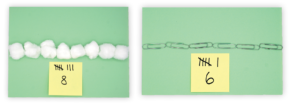
Big and Little Feet
Show how to use your feet to measure the length of your child’s bedroom. Point out how you alternate each foot by placing the heel of one shoe against the toe of the other. Have your child measure the same distance with her feet. Count and compare the measurements. Ask: Why did it take fewer of my feet to measure the same distance?
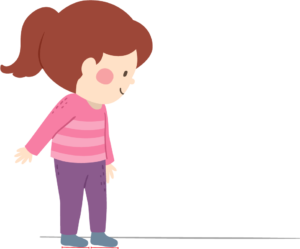
Looking for Levers
Reread pages 8-9 in Simple Machines. Discuss how levers work. Have your child help you search through tools at home (screwdriver, hammer, bottle opener) to find levers. Show how each tool works. Then, have your child pretend to use the tool. Remind your child of safety rules.
Nature’s Tools
Walk outside with your child to find natural items you could use as tools. Remind your child that tools are used to do a task (job). Your child might choose a stone. Ask: What job will you use the stone for? (smash dirt, roll out clay) Be open to creative thinking and try using the natural items to do the jobs suggested.
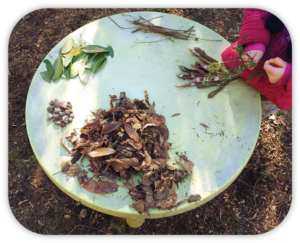
Scissor Breathing
Have your child lie on his back on the floor. Explain that he is going to pretend his legs are a pair of scissors by opening and closing them a few times. Have your child inhale and exhale with each open-and-shut move. Say: Scissors are tools. They help make work easier.
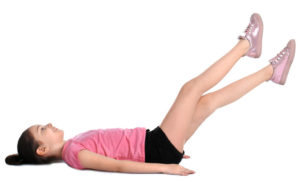
Daily Message
A hammer hits a nail.
- Say the sentence. Have your child repeat it.
- Say: hammer/hits. Both words begin with /h/. Have your child repeat the words. Say: nail/heavy. Ask: Do both words begin with the same sound?
- Write the sentence. Point out the period at the end.
- Write h below. Have your child circle words that begin with h in the sentence.
Tongue Twisters
Say a tongue twister and have your child repeat the words with you. Ask: Which sound do you hear at the beginning of each set of words? What other words begin with that same sound?
six super snacks
big black bears
caramel coated candy
nine nice nurses
Wee Willie Winkie
Sue sells seashells
Storytime
Tell your child that all of the “giants” in the book today were made using tools. Have your child listen to find out the names of the giants. Read Giants Made by People. Ask: What are the giants in this book? Why might the author call buildings and vehicles giants? Which giant do you think would be the most difficult to build? Why?
Size Counts
Compare the lake measurements you made with cotton balls and paper clips yesterday. Count the number of each you used. Match one paper clip to each cotton ball. Ask: Which did we use more of? (cotton balls) Compare the size of the paper clip to the cotton ball. Ask: Which is longer? Explain that the longer the unit, the fewer are needed to measure the lake.

Lever Experiment
Help your child set up and do this experiment:
- Put one end of a ruler under a heavy book.
- Place a small block under the ruler close to the book.
- Press down on the other end of the ruler.
- Can you lift the heavy book with one finger?
Ask: Does using the lever make lifting the book easier?

Spinner Game
Divide a paper plate into four equal sections. Make sets of dots 1-4 with matching numerals inside each section. Place a paper clip in the center of the plate. Hold it in place with the tip of a pencil where the lines cross. Have your child flick the spinner (paper clip) and collect that many pennies.

Humpty Dumpty
Invite family members to stand in a circle. As you chant the verse, everyone pretends to sit on a wall, safely “fall” or drop to the floor, and then hold hands to stand up together. Ask: Why is it hard to stand up while you are holding hands?
Humpty Dumpty sat on a wall.
Humpty Dumpty had a great fall!
All the Queen’s horses
And all the King’s men,
Could put Humpty together again!
Daily Message
How does a skateboard roll on a ramp?
- Say the sentence. Have your child repeat it.
- Say: roll/ramp. Both words begin with /r/. Have your child repeat the words. Say: hammer/how. Ask: Do both words begin with the same sound?
- Write the sentence. Point out the question mark at the end. Write H below the sentence. Say: How. Have your child circle the uppercase H in the sentence.
Writing Together
Look out of the window with your child. Have your child complete the sentence I see a __________ . Write your child’s sentence on paper. Name something that you see. Write your sentence on the paper below your child’s. “Read” the sentences together. Have your child point to the words that are the same in each sentence. (I, see, a)

Storytime
Read Giants Made by People. When you finish reading, pause on the final page. Talk with your child about giant things you have seen. Ask: What giants have you seen that were not in the book? Which giant is your favorite?
Standard Measure
Have your child place the pull tab from a soda can between two long marks on ruler. The tab fits perfectly between the two marks. Try it between two other long marks. Say: The tab is 1-inch long. The distance between the long marks is one inch. An inch is a standard unit of measurement. It is the same length on every ruler or tape measure.

Make a Ruler
Cut a 1” x 12” strip of cardboard. Place the cardboard next to a ruler (on the side that measures inches). Have your child use the ruler as a guide for making her own ruler on the cardboard strip. Point out the hashmarks and numerals for each one-inch distance. Help your child make similar hashmarks and matching numerals on her ruler.
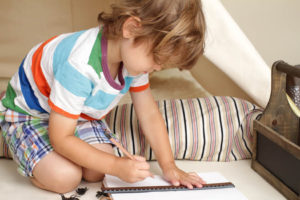
Wheel and Axle
Help your child set up and do this experiment:
- Put a brick on the floor.
- Give a little push with one finger. Will it move?
- Line up a row of smooth-sided pencils or markers. Place the brick on top of the pencils. Give it a little push with one finger. Why is it easier to move?
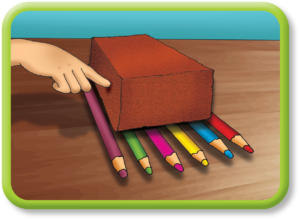
Garden Tools
Talk with your child about tools that you use to take care of your garden or your indoor plants. Explain that gardeners use hoes, rakes, shovels, shears, and lawnmowers as they work. Many of these tools are examples of simple machines. Click image too see a garden and some garden tools.
Row Your Boat
Oars are long paddles of wood used to row a boat. Sit on the floor and pretend to hold an oar in each hand. Move your arms back and forth to row. Sing or chant “Row, Row, Row Your Boat.” Say: Our arms are the oars. Oars are tools that make the boat move faster.
Row, row, row your boat
Gently down the stream.
Merrily, merrily, merrily, merrily
Life is but a dream.
Daily Message
Active animals go up a ramp.
- Say the sentence. Have your child repeat it.
- Say: active/animals. Both words begin with /a/. Have your child repeat the words. Say: go/ramp. Ask: Do both words begin with the same sound?
- Write the sentence. Write A, a, and g below the sentence. Say: Active. Tell your child the word begins with /a/. Repeat with animals /a/ and go /g/.
Read and Write
Read the sentences that you and your child wrote yesterday. Look at the cover of the book I See Giants. Read the title and have your child find two words that match the words in your sentences (I, see). Read the book together. After reading, have your child add a new page to her journal that is like the pages in the book.
Just for Fun
Choose a favorite song to sing today. It might be a song that made you and your child laugh. It might be a song that is stuck in your head! It might be a song from this theme or a theme you have already completed. Find a favorite and have fun singing together!
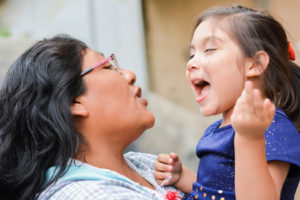
Storytime
Watch the read-aloud video Simple Machines with your child. Pay special attention today to the description of simple machines. After listening, see if the two of you can find an example of each simple machine in your home.
Shoe Measurement
Find the size tag inside one of your child’s shoes. Ask: What does the numeral tell you about the shoe? Have your child place the shoe against a ruler so the heel is at 0. Ask: How long is the shoe? The numeral on the ruler at the toe tells the shoe’s length in inches.

Playground Tour
Visit a nearby playground with your child. Invite him to show how each piece of playground equipment works. Talk about the simple machines that are most like the playground equipment. For example, a seesaw is a lever, the slide is an inclined plane, and a merry-go-round is a wheel and axle.
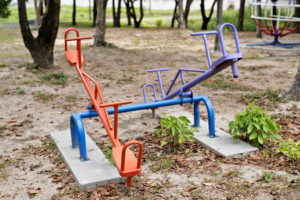
Inclined Plane
Help your child set up and do this experiment:
- Build an inclined plane by placing a board against a stool.
- Tie a rope to a tub of books and pull it up the ramp.
- Is it easier to pull it up or to pick up the tub of books and place it on the stool?
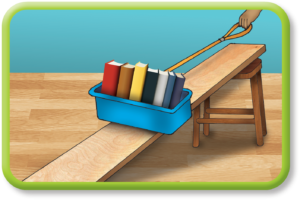
Create Confetti
Have your child use scissors to cut paper into tiny pieces. Challenge her to cover a stick-on note with a layer of confetti. After a few minutes of cutting, suggest she tear the confetti instead of cutting it. Ask: Is it easier to tear or cut the paper? Why? Have your child glue the confetti pieces on paper to make a collage.
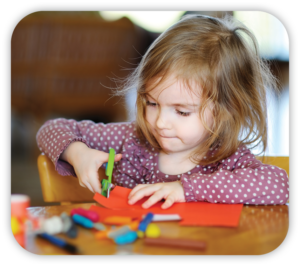
Use Your Tools
Say: Our feet, ears, hands and voices are like tools. We have the power to use them to be helpful. Talk about ways you will use your tools today. Ask: How can we use our ears to learn? our hands and feet?

Daily Message
A lever lifts dirt in the garden.
- Say the sentence. Have your child repeat it.
- Say: lever/lifts. Both words begin with /l/. Have your child repeat the words. Say: lever/dirt. Ask: Do both words begin with the same sound?
- Write the sentence. Point out the period at the end.
- Write g below the sentence. Say: garden. Have your child circle g in the sentence.
Add a Move
“Johnny Works with Hammers” adds a hammering move with each verse. Your child will begin pretending to hammer with one hand and eventually hammer with both hands, feet, and his head. Say: We used our hands and feet as hammers in this song. What else could you use as a hammer? Click image for song lyrics.
Storytime
Read Simple Machines with your child. Point out the small black and white icons by each photo. on pages 4-5. Ask: What do these drawings mean? How do they help us understand the facts in the book? Which simple machine would you like to learn more about? Reread pages about the simple machine your child chooses.
Measure How Far
Invite your child to jump. Mark the point where he starts and lands. Measure the distance with string. Then tape the string to the floor. Have your child choose a measuring “unit,” such as straws or craft sticks, to measure the length of the string. Ask: How many straws long was your jump? How do you know?
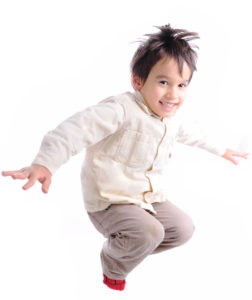
Wedge
Help your child set up and do this experiment:
- Use a plastic knife to cut a lump of play dough.
- Use the side of a marker to cut a lump of play dough.
- Which tool is a wedge? Which one makes a better cut?
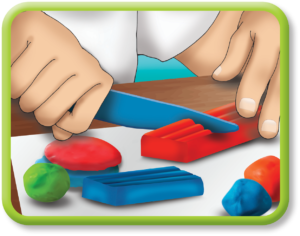
Slice It Up!
Have your child use a plastic knife to help cut bananas (or other soft fruit) for a tasty snack. Show how to hold the fruit with one hand and use the other hand to gently press down with the knife edge. Safety Note: Even plastic knives can cut little fingers. Supervise this activity closely.
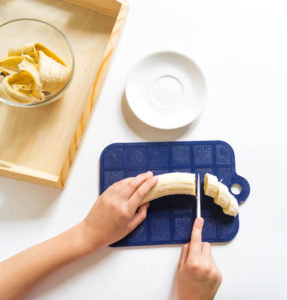
Creative Me
Week 3: I Can Imagine
This week, you and your child will celebrate imagination. You will learn ways to share your imaginative and creative ideas with others.
Word of the Week: imagination
Before You Begin
Watch these videos to better understand the concepts your child will be learning this week. These are not videos you will watch with your child. These are just for you!

Books to Read
- My Classroom Little Book
- The Do-Nothing Machine eBook
- The Do-Nothing Machine Read-Aloud video
- The More the Merrier eBook
Supplies to Gather
- boxes
- cut-out shapes
- glue
- jar
- journal
- mirror
- note cards
- paper
- paper squares
- pennies
- photo of child
- plastic chips or paper circles
- play dough
- ruler
- scissors
- square slices of bread (2)
- straws
- tape
- toothpicks
- wiggle eyes
- writing tools
All Together
You and your child connect. You help each other breathe and calm yourselves. You wish each other well. You do your jobs to be helpful. Imagine a world in which everyone is always kind and helpful to others. Sing “All Together” to remember how important it is to work together. Click image for lyrics.
Daily Message
I imagined I swallowed a yellow yak.
- Say the sentence. Have your child repeat it.
- Say: yellow/yak. Both words begin with /y/. Have your child repeat the words. Say: umbrella/bug. Ask: Do both words begin with the same sound?
- Write the sentence. Point out the period at the end.
- Write y below the sentence. Say: yes. Have your child circle y in the sentence.
Herman the Worm
Enjoy singing “Herman the Worm.” Act it out as you listen. Begin by looking around for a piece of imaginary bubble gum. Pretend to unwrap the wrapper (make a crinkling sound) and put the gum in your mouth. Chew until the pretend gum is soft and gooey. Start the music and continue acting out what happens. Click image for song lyrics.
Storytime
Watch the read-aloud video The Do-Nothing Machine. Say: The boy enjoyed building even though he hadn’t decided what his machine would do. Do you practice catching a ball just for fun? Is there another activity you especially like to do?
Create with Shapes
Cut an 8″ x 8″ sheet of paper into four equal 2″ x 2″ squares. Cut one 2″ x 2″ square in half to make two equal-sized rectangles. Cut one 2″ x 2″ square diagonally to make two equal-sized triangles. Have your child name the shapes and put them together to make new shapes or a picture. Save the paper shapes to use throughout the week.
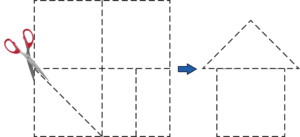
Mental Math
Invite your child to close her eyes and listen closely as you drop three pennies one at a time into a jar. Challenge your child to form a mental picture of the pennies she heard drop. Have her draw the number of pennies she sees in her mind. Compare the picture to the actual pennies inside the jar. Try other quantities 1-5.
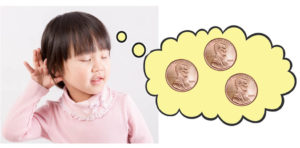
What Happened?
Have your child look at his name written on a note card and then close his eyes. Turn the card upside down. Have your child open his eyes. Ask: How does your name look different? Challenge your child to move the card so his name returns to normal. Reflect the name in a mirror. Ask: How did your name change?

Watching Clouds
Have your child lie on her back outside and look at the clouds. Have her imagine how the cloud shapes look like other objects. Offer suggestions such as: Does that cloud look like a dragon? Point out different cloud types if you observe them: cirrus clouds (thing, white, wispy), stratus clouds (gray, flat), cumulus clouds (round tops, white, puffy).
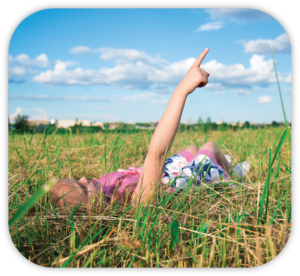
Butterfly Breathing
Have your child imagine what “butterfly breathing” might look like and show you her ideas. Use your child’s ideas. Practice your new breathing strategy several times throughout the day. For example, she might flap pretend butterfly wings quickly as she breathes in and flap them slowly as she breathes out.
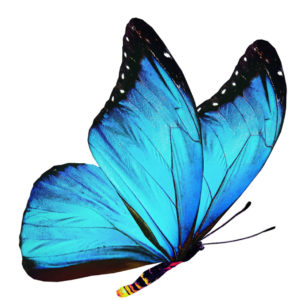
Daily Message
The queen makes magnificent things!
- Say the sentence. Have your child repeat it.
- Say: makes/magnificent. Both words begin with /m/. Have your child repeat the words.
- Write the sentence. Point out the punctuation mark at the end. Say: A sentence that shows excitement ends with an exclamation point. Have your child circle the exclamation point. Ask: What do you think the queen made that was magnificent?
Same Sound Words
Say and have your child repeat groups of three words. Have your child name the words that begin with the same sound. Then have your child think of a new word that begins with that same sound.
bug, bat, door
yo-yo, queen, yes
car, dog, donut
hammer, axe, heavy
Superhero
Watch Charity Kahn’s music video of “Superhero.” Dance along with Charity as she sings about the ways that we can all be heroes if we put a smile on someone else’s face. When you finish singing, ask: What super power will you share?
Storytime
Read The More the Merrier. After reading, have your child tell how the characters in the story use their imaginations to create a sand castle. Ask: What does the phrase “the more the merrier” mean? Talk about cooperation. Have your child give an example from the story that showed how the children worked together.
Finger Images
Hold up two hands with several fingers extended on each for five seconds. Hide your hands. Ask: How many fingers did you see? How did you remember how many? Have your child hold up his hands with fingers extended to match what he saw. Ask: How many were on each hand? How many altogether? Repeat with different combinations.

Animal Shapes
Walk with your child outdoors. Notice the shapes and movements of living things around you. Have your child pretend to be an animal or plant. Describe her movements. For example, you might say: When you hold out your arms and stand on one foot, you are the same shape as the bird as it lands on the branch.

Daily Message
Have you ever had a milk mustache on your upper lip?
- Say the sentence. Have your child repeat it.
- Say: milk/mustache. Both words begin with /m/. Have your child repeat the words.
- Write the sentence. Point out the question mark at the end. Say: This sentence asks a question.
- Write u below the sentence. Say: Upper begins with the letter u and the sound /u/. Have your child circle u in the sentence.
Writing Together
Say: We can use our eyes to see things that are real. I see you. Have your child name something he sees in the room. Use the sentence starter: I see a __________ . Write several sentences on paper. Have your child “read” each sentence with you. Ask: What is the first word in each sentence? (I) What is the next word in each sentence? (see)
I see a chair.
I see a couch.
I see a window.
Storytime
Read The More the Merrier. Have your child tell about the order of events in the story. Ask: What happened first? Next? Click sand castle tools to put the story events in order.
Slice It This Way
You can divide a shape by cutting it into two new shapes. At lunch time, cut a slice of square bread in two equal triangles. Ask: What shapes did I make? How do you know the slices are triangles? Have your child use a plastic knife to copy what you did with a bread slice. Make a sandwich with the four triangles. Enjoy!
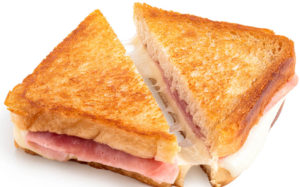
Toothpick Picture
Show your child a toothpick picture for five seconds. Hide the image. Ask: What did the toothpicks look like? How many toothpicks did you see? Challenge your child to create the same image with a set of toothpicks. Ask: How many toothpicks did you use altogether? Click image to enlarge it.
Imaginary Play
Walk to a nearby playground. Encourage your child to think about how the play equipment could be used for imaginary play. For example, your child might pretend the climbing structure is a rocket ship or the swing is an airplane. Bring along simple props and costumes, such as a towel for a superhero cape.
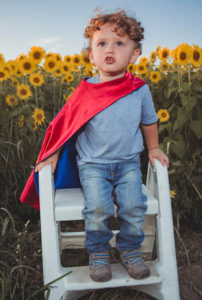
Cut and Create
Have your child use scissors to cut straws into small pieces. Then challenge him to use his imagination to create a creature or toy using the small straw pieces, play dough, and wiggle eyes. Ask: What is your special creation? Note: Cutting with scissors helps develop control and strength of small hand and finger muscles.

Walk and Stop
Hold hands with your child as you play “Walk and Stop.” Move together as you chant. Try walking, jumping, skipping, and marching. Ask: How else could we move safely together?
We walk, and walk, and walk
and … STOP!
(come to a quick stop together)
We jump, and jump, and jump
and … STOP!
Daily Message
My yellow yo-yo rolled under the quilt.
- Say the sentence. Have your child repeat it.
- Say: yellow/yo-yo. Both words begin with /y/. Have your child repeat the words.
- Write the sentence. Point out the period at the end.
- Write y below the sentence. Have your child say the letter name and sound /y/.
Read and Write
Read the book My Classroom with your child. Track your finger under the words as you read each page. Say: The last page asked a question. How will you answer it? Have your child draw and write on the first blank page in her journal to answer the question.
Storytime
Listen to the read-aloud video The Do-Nothing Machine. This book is a poem. Remind your child that the author Sharon MacDonald wrote the poem about her son. He loved building! Ask: Which rhyming pairs of words did you hear?
Fold the Paper
Give your child a variety of paper squares (colored paper, scratch paper, newspaper). Have your child fold the squares to make different shapes. Ask: How can you make a rectangle? triangle? When your child has figured out how to make different shapes, have her use a ruler and black marker to highlight the fold lines. Save the squares and markings for tomorrow.

Dot Image
Arrange five paper circles as shown. Cover them with your hand or a paper. Uncover them for a few seconds for your child to see. Cover them again. Ask: How many dots did you see? How did you remember seeing them? Challenge your child to make the same arrangement. Ask: How many on the top? bottom? How many altogether?
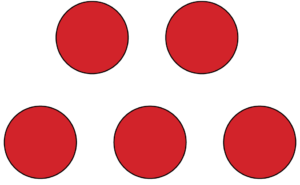
Transform a Circle
Trace a circle (using a lid or can) on two separate sheets of paper. Make a star at the top of the circles. Place the papers side by side. Turn one paper upside down, and then sideways, and then reflect it in a mirror. Talk about why the circle shape never changes. Ask: What does change? (sometimes the position of the star) Repeat using two ovals or two squares.
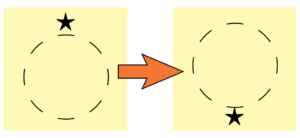
Storytelling
Practice storytelling with your child. Think of several characters and what they might do. Ask: What will happen next? How will the story end? Connect the sequence of story events and give the story an ending. Your child will be using his imagination and trying out plot development!

Control Anger
Talk with your child about positive ways to handle anger and frustration. Write your child’s ideas. Add simple pictures to the words. Post the list in a spot where your child can see it like on the refrigerator. Remind your child to use these strategies if she feels angry or frustrated. Click image to enlarge list.
Daily Message
How would you make a magnificent thing go up?
- Say the sentence. Have your child repeat it.
- Say: make/magnificent. Both words begin with /m/. Have your child repeat the words. Repeat with up/umbrella.
- Write the sentence. Point out the question mark at the end.
- Write the letter u below the sentence. Say: Up begins with the letter u and the sound /u/. Have your child circle u in the sentence.
Storytime
Say: This week we read two books about building (The More the Merrier and The Do-Nothing Machine). Ask: Who is the main character of each story? (Ivan and John) Have your child think about how the two characters are alike and different. Ask: What did they build? Who made a plan? Who built alone?
Cutting Shapes
Give your child the paper shapes she folded yesterday. Have her use scissors to cut along the folds she traced with the marker. When the shapes are cut apart, have your child arrange them on paper. Try several arrangements before using glue to make a finished picture. Provide markers for adding details.
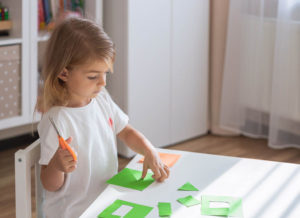
Penny Images
Arrange a set of five pennies as shown. Ask: How many pennies are on top? the bottom? in the middle? How many altogether? Count out five more pennies. Have your child make another arrangement that looks different. Challenge her to use words and numbers to describe the arrangement.

Make a Machine
Have your child use boxes, tape, markers, and glue to begin constructing a “Do-Nothing Machine.” Ask questions to guide his thinking and building process: What do you want the machine to do? look like? Do you want it to move? How? What is the best way to attach [name of object] so it will look or move as you want it to?
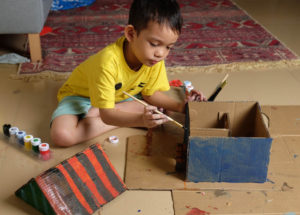
Creative Me
Week 4: My Art Is Me
This week, your child will use her imagination to be an artist, musician, storyteller, and dancer.
Word of the Week: creative
Before You Begin
Watch these videos to better understand the concepts your child will be learning this week. These are not videos you will watch with your child. These are just for you!

Books to Read
- The Dot eBook
- What Will You Create? Read-Aloud video
- What Will You Create? eBook
Supplies to Gather
- art supplies
- chalk
- clay and play dough
- color mixing (ingredients for homemade play dough or paints, food coloring)
- dot cut-outs
- dot stickers
- journal
- long strips of ribbon or colored paper
- markers and crayons
- metal fork
- nature items (bark, flower, leaf)
- note cards
- paper
- paper plates
- paper clips
- plastic cups, boxes, pots and pans
- puppets (homemade ones are fine!)
- rubber band
- ruler
- small bag or envelope
- stamp pad or puddle of paint
- straws
- toothpicks
- writing tools
Daily Message
Which colors could you paint an elephant?
- Say the sentence. Have your child repeat it.
- Say: elephant/egg. Both words begin with /e/. Have your child repeat the words. Say: colors/could. Do the words being with the same sound?
- Write the sentence as your child recalls it.
- Write the letter e below the sentence. Say: Elephant begins with the letter e and the sound /e/. Have your child circle e in the sentence.
Storytime
Say: Today we will listen as the storyteller reads to us. Watch the read-aloud video What Will You Create? with your child. Encourage your child to respond to the storyteller’s questions.
Handprint
Ask your child to give you a high-five. Count the fingers on the hands you used to give the high-five. Each hand has five fingers, ten fingers in all. Invite your child to use a marker to trace around her hand on paper. Challenge her to use her imagination to turn the outline of her hand and five fingers into a picture of something else.
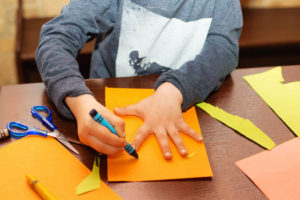
Sound Waves
Have your child place his fingers on your throat as you hum. Then, have him remove his hand and just look at your throat while you hum a second time. Ask: What did you feel? hear? see? Explain that the air moving between vocal cords in your throat creates vibrations you can feel, but barely see. The vibrations create sound waves that travel to your ear.

Puppet Show
Have your child use puppets to create a story. At first, have your child play the part of one character as you play a second character. Carry on a conversation between the two puppets. As your child becomes more skilled at storytelling, she may be able to play the parts of two characters with a different puppet on each hand.

Can You Guess?
Ask: Today we will use our fingers to draw pictures for a guessing game. Breathe on a mirror or window to create a steamy surface. Give a clue, such as I’m going to draw a shape. Draw and ask: What did I draw? Give your child a chance to give a clue and draw.

Daily Message
Would you roll red play dough to make olives?
- Say the sentence. Have your child repeat it.
- Say: roll/red. Both words begin with /r/. Have your child repeat the words. Say: olive/grape. Do the words begin with the same sound?
- Write the sentence as your child recalls it.
- Write the letter o below the sentence. Say: Olives begins with the letter o and the sound /o/. Have your child circle o in the sentence.
Listen to Words
Have your child listen to words to hear alliteration (words with the same beginning sound). Say each set of three words. Have your child repeat the words. Ask: Which pair of words begins with __________ ? Have your child think of a new word that begins with the same sound.
map, mop, hat /m/
egg, ball, elbow /e/
car, octopus, octagon /o/
teeth, paint, potter /p/
Storytime
Look at the cover of The Dot. Say: Creative people make new things or think of new ideas. Ask your child to listen carefully as you read to find out who is creative in this story (Vashti). Ask: How did Vashti feel about her art in the beginning? At the end? What happened that made her feelings change?
Create with Eight
Turn to pages 22-23 of The Do-Nothing Machine. Invite your child to count the number of nails on the board in the center of his machine and the number of spoons in the spinning attachment above. There are eight of each. Invite your child to make a set of eight toothpicks. Store the toothpicks in a bag or envelope for tomorrow.
Colorful Rainbow
Cut white paper into six equal-sized strips. Have your child color each strip a different color of the rainbow: red, orange, yellow, green, blue, purple. Count the strips together to be sure there are six altogether. Have your child use the rainbow strips to sing and dance “Rainbow Dancers.” Click image for lyrics.
Fork Vibrations
Gently strike a metal fork against the edge of a hard object. Put the fork close to your child’s ear. Ask: What do you hear? (faint, high-pitched sound) The metal tines of the fork vibrate back and forth to create sound waves. The picture shows a special tool called a tuning fork. How is it different from a regular fork?
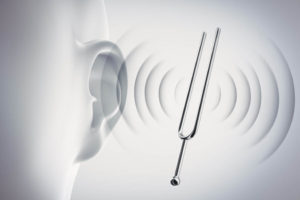
Big Dot Play
Have your child create a big dot design on the floor using paper plates or big dot paper cutouts you make. Suggest that your child arrange the dots into a design and then walk around the design to see what it looks like from different points of view. Take photos of different designs. Ask: How did you decide where to place the dots?
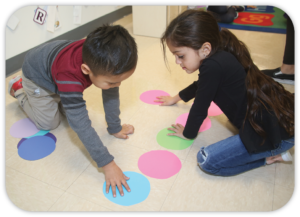
One-of-a-Kind
Have your child make a thank-you card, birthday card, or a just “thinking of you” card for a friend or family member using paper and art supplies. If your child asks, help write a message on the card. Be sure to have the “artist” (your child) sign this special creation. Then deliver it!
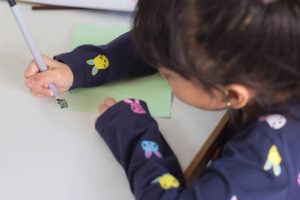
Daily Message
What could you put in a beautiful box?
- Say the sentence. Have your child repeat it.
- Say: put/pig. Both words begin with /p/. Have your child repeat the words. Say: beautiful/box. Do the words being with the same sound?
- Write the sentence as your child recalls it.
- Write the letter x below the sentence. Say: Box has an x at the end. Have your child circle x in the sentence.
Writing Together
Write a recipe for cookies. (This is not a real recipe but a chance for your child to think creatively and think about a series of steps.) Have your child suggest ingredients and how to combine them. Ask questions such as: What will we do first? What would come next? Help edit the recipe: Is something missing? Would a picture help?

Storytime
Read The Dot. After reading, ask: How did Vashti’s teacher encourage her to keep trying to draw? (told her to “just make a mark and see where it takes you,” had her sign her name to her artwork, and framed the picture) Say: The teacher’s words and actions encouraged Vashti. Have your child tell about a time when someone encouraged her to keep trying.
Seven Is a Week
Give your child a set of paper clips. Invite her to take one paper clip for each day of the week as you say the days: Sunday, Monday, Tuesday, Wednesday, Thursday, Friday, Saturday. Have your child count the paper clips. Ask: How many? (7) Repeat the days, pointing to the paper clips. Link the paper clips together to make a “seven days of the week” chain.
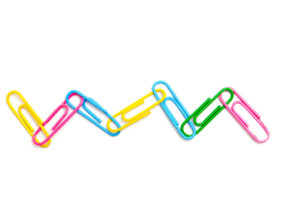
Be a Drummer
Have your child use a wooden spoon to experiment tapping on different household objects (plastic cups, boxes, pots pans). Ask: Which object makes the best sound? Which items ring? vibrate? Why? Why not? Explain to your child that objects that are metal and hollow (empty inside) will make louder rings and vibrations.
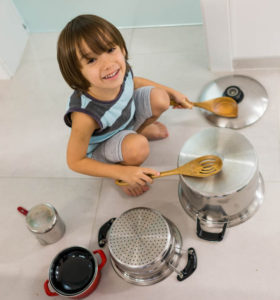
A Sculptor
Have your child sculpt using clay or play dough and techniques and ideas in the book What Will You Create? When your child is done with a project, have her describe her creation. Take a photo. Ask: Why did you choose this idea? What actions (pinch, squeeze, roll, poke, push, pull) did you use? What tools did you use?

Encouragement
Encouragement is giving somebody support, confidence or hope. Say: Everyone can offer encouragement to others. Kind words are a good way to do this. Talk about the kind words you could use to encourage others. Throughout the day, use those kind words.
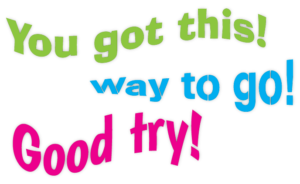
Daily Message
An octopus has eight long legs.
- Say the sentence. Have your child repeat it.
- Say: octopus/olive. Both words begin with /o/. Have your child repeat the words. Say: long/legs. Do the words begin with the same sound?
- Write the sentence as your child recalls it.
- Write the letter o below the sentence. Say: Octopus begins with the letter o and the sound /o/. Have your child circle o in the sentence.
Art Show Invitation
Talk with your child about the artwork created this week. Say: It would be fun to celebrate your creations with an Art Show. Have your child create an announcement of the show for family and friends. Say: When we ask others to come to a special event, we send an invitation. Help your child add the day, time, and place to the invitation and post it for all to read.

Refrigerator Picture
Have you ever posted one of your child’s drawings on the door of your refrigerator? The song “Refrigerator Picture” is about how a little artist feels when his mother displays his alligator drawing. Ask: Where are some places that we could display artwork in our house? Click image for song lyrics.
Storytime
Watch the read-aloud video What Will You Create? Talk about the ways artists are creative. See how many different ideas you can list. Ask: Could a snowman or a sandcastle be art? What about a song or a poem? a fancy hairstyle or a decorated cake?
Pluck It
Stretch a rubber band hooked to your thumbs. Invite your child to pluck it. Return the rubber band to its original shape. Have your child try to pluck it again. Ask: Why does the rubber band make a sound (vibrate) when it is stretched? Can you see the vibrations? What musical instrument does this remind you of?

Crayon Rubbings
Have your child make a crayon rubbing by placing a nature item (bark, flower, leaf) under a sheet of paper and rubbing the side of an unwrapped crayon over the paper. Ask: Were you surprised when the outline of your object appeared? What would happen if you used more than one color?

Draw Commitments
Every day you and your child choose an agreement to keep learning time safe. Today have your child draw a picture that shows his commitment. Display the artwork on a bulletin board or the refrigerator. Add to and change the artwork throughout the coming weeks.
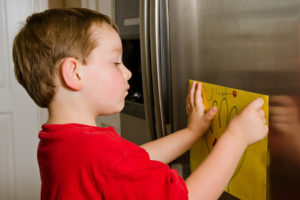
Daily Message
I painted an egg with purple paint.
- Say the sentence. Have your child repeat it.
- Say: egg/elbow. Both words begin with /e/. Have your child repeat the words. Say: purple/paint. Do the words begin with the same sound?
- Write the sentence as your child recalls it.
- Write the letter e below the sentence. Say: Egg begins with the letter e and the sound /e/. Have your child circle e in the sentence.
Storytime
Turn to pages 14-15 in What Will You Create? If you have the ingredients for homemade play dough, follow the recipe on page 14. Have your child help measure, mix and knead the dough. Color mixing is creative fun and can be done with paints and food coloring as well as play dough. Use the chart on page 15 to create new colors.
Nine Grid
Draw a nine-square grid. Give your child pennies to put inside each square. Ask: How many pennies fill the grid? Say: A good way to remember the quantity nine is to think of the squares in a Tic-Tac-Toe game. Invite your child to play Tic-Tac-Toe. A straight line of three pennies wins the game.
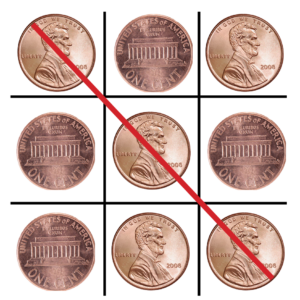
Eight Sculpture
Have your child create an 8-legged creature using play dough and the eight toothpicks she collected and counted throughout the week. Display the sculpture on a paper plate. Have your child tell about the sculpture. Ask: How could you change your sculpture to create something new? What materials do you need?

Dot Pictures
Have your child use a pencil and a stamp pad or puddle of paint to make a dot picture. Show your child how to press the pencil eraser onto the stamp pad or paint and then onto a piece of drawing paper. If you use several colors, use a different pencil for each color. Ask: How many dots did you make?
